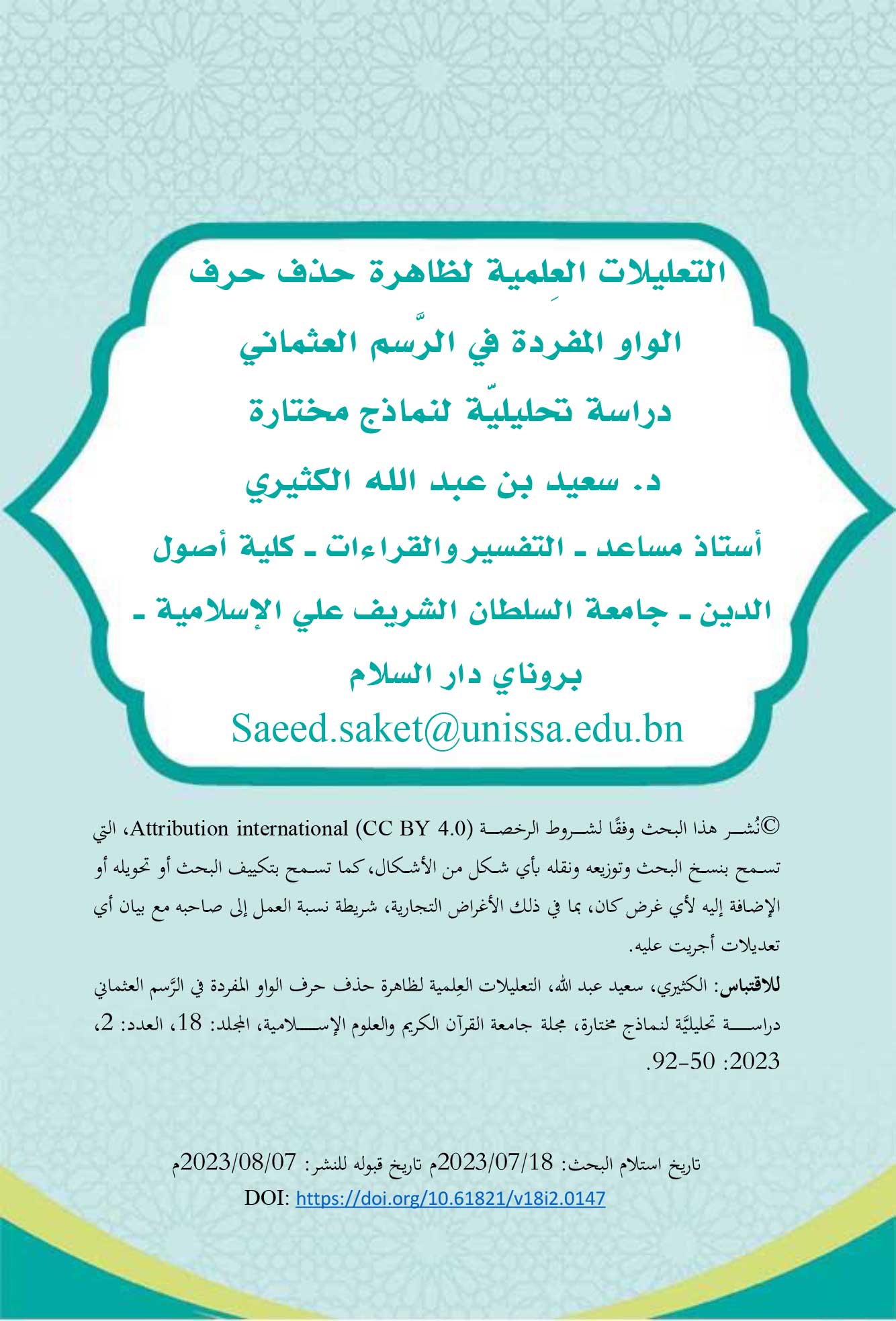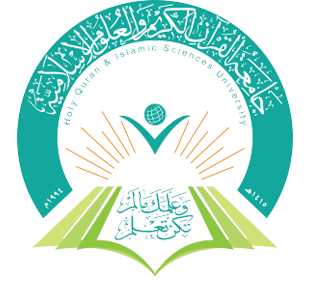التعليلات العِلمية لظاهرة حذف حرف الواو المفردة في الرَّسم العثماني دراسة تحليليَّة لنماذج مختارة
DOI:
https://doi.org/10.61821/v18i2.0147الكلمات المفتاحية:
الحذف، الرسم العثماني، احتمال القراءات، الواو المفردةالملخص
إن مضمون هذا البحث الموسوم: (التعليلات العلمية لظاهرة حذف حرف الواو المفردة في الرسم العثماني دراسة تحليلية لنماذج مختارة) يكمُن في دراسة ظاهرة من ظواهر الرسم العثماني، وهي حذف حرف الواو المفردة في بعض كلمات القرآن الكريم. ويهدف البحث إلى إبراز ظاهرة الحذف في حرف الواو المفردة في القرآن الكريم، وبيان الأسباب العلمية الموجبة لهذه الزيادة بعيدًا عن التكلف والتعسف وتحميلها ما لم تحتمل.
والمنهج المتبع هو الاستقرائي التحليلي؛ وذلك بتتبع الكلمات القرآنية التي أثَّر الحذف فيها تأثيرًا كبيرًا، ثم تحليلها ودراستها؛ لإدراك الأثر العَملي الذي يظهر في بنيتها. ومن أبرز النتائج التي توصل لها البحث أن حذف حرف الواو المفردة جاء لأسباب علمية يستحيل دخول التخمين والشك في مصداقيتها، كما تخلص النتائج إلى أن مشارب هذه التعليلات تنوعت بين علوم عدة، كاللغة العربية والقراءات والتفسير وقواعد الإملاء، مما يدل على وجاهة التعليلات وارتباطها العلمي الوثيق.
التنزيلات

التنزيلات
منشور
إصدار
القسم
الرخصة
الحقوق الفكرية (c) 2023 مجلة جامعة القرآن الكريم والعلوم الاسلامية

هذا العمل مرخص بموجب Creative Commons Attribution 4.0 International License.
©نُشر هذا البحث وفقًا لشروط الرخصة (CC BY 4.0) Attribution international، التي تسمح بنسخ البحث وتوزيعه ونقله بأي شكل من الأشكال، كما تسمح بتكييف البحث أو تحويله أو الإضافة إليه لأي غرض كان، بما في ذلك الأغراض التجارية، شريطة نسبة العمل إلى صاحبه مع بيان أي تعديلات أجريت عليه



